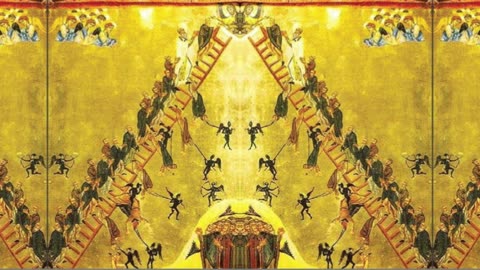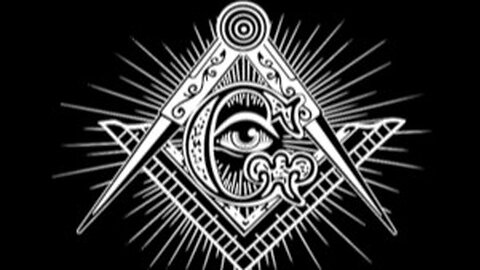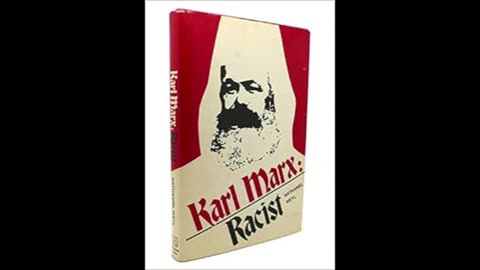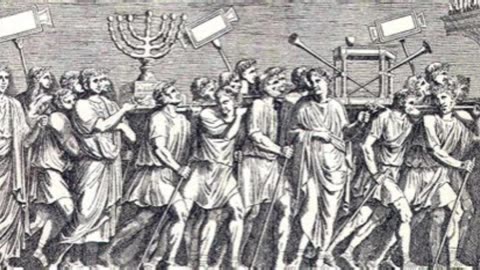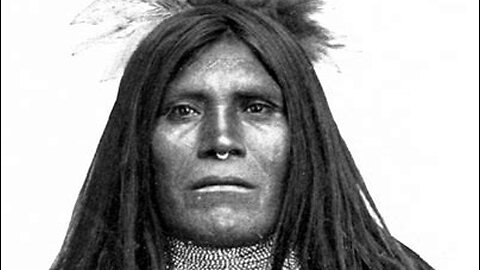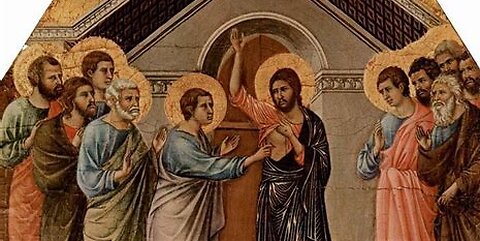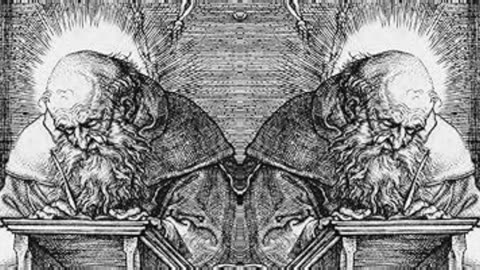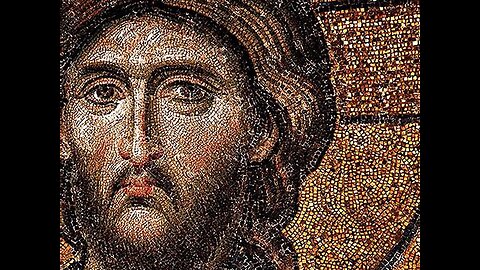
-
The Imitation of Christ by: Thomas à Kempis (between 1418 and 1427)
 Deus Meum Que JusWritten between 1418 and 1427, this book is a devotional handbook devoted entirely to interior transformation. Rather than discussing doctrine, debate, or grand theology, it aims at the daily discipline of mastering the self, subduing ego, and aligning one’s life with the pattern set by Christ. The book reads like a quiet voice speaking directly to the conscience... meditative, simple in language, but pointed in its demands. Structured in short reflections, it urges the reader to withdraw from vanity, cultivate humility, and develop a steady inner life that isn’t tossed around by moods, praise, criticism, or the chaos of the world. It pushes the reader toward self-examination and away from empty intellectualism. The emphasis is always on doing... living the virtues, practicing patience, embracing simplicity, and learning the difficult art of surrendering one’s will to a higher purpose. Above all, it focuses on the interior road, the one no one else sees, where character is shaped. It’s a guidebook for anyone who wants to be disciplined, grounded, and inwardly steady, regardless of their surroundings. No plot twists, no theatrics... just steady, practical instruction for building an inner life that holds firm. About the Author: Thomas à Kempis (c. 1380 - July 25, 1471) was a German-Dutch canon regular, copyist, and spiritual writer whose life revolved around discipline, contemplation, and the slow, steady refinement of the inner self. Born in Kempen near Cologne, he entered the Augustinian Canons at Mount St. Agnes in the Netherlands, a house associated with the Devotio Moderna movement... a reformist spiritual current emphasizing personal piety, humility, and practical devotion over public display or intellectual showmanship. He spent most of his adult life in that monastery, working as a scribe, instructor, and spiritual mentor. His handwriting appears in dozens of manuscripts, including an early copy of the entire Bible produced with remarkable precision. He wasn’t a public figure, preacher, or reformer in the political sense... he was a man who preferred the quiet room, the desk, the candle, and the discipline of putting the soul in order. His work reflects this temperament... direct, inward, stripped of ornament, and relentlessly focused on character formation. The Imitation of Christ is the best-known text attributed to him, and it remains one of the most widely read devotional books in the Christian tradition. While he was deeply embedded in a spiritual movement, there is no credible evidence that he belonged to any mystery schools, esoteric orders, or fraternal rites outside his monastic vocation. His legacy is defined by consistency... decades of copying, teaching, guiding, and writing, all pointed toward cultivating the inner life. Through his work, he continues to speak in the same tone he lived... quietly, firmly, and always toward the goal of shaping the heart rather than impressing the world.421 views
Deus Meum Que JusWritten between 1418 and 1427, this book is a devotional handbook devoted entirely to interior transformation. Rather than discussing doctrine, debate, or grand theology, it aims at the daily discipline of mastering the self, subduing ego, and aligning one’s life with the pattern set by Christ. The book reads like a quiet voice speaking directly to the conscience... meditative, simple in language, but pointed in its demands. Structured in short reflections, it urges the reader to withdraw from vanity, cultivate humility, and develop a steady inner life that isn’t tossed around by moods, praise, criticism, or the chaos of the world. It pushes the reader toward self-examination and away from empty intellectualism. The emphasis is always on doing... living the virtues, practicing patience, embracing simplicity, and learning the difficult art of surrendering one’s will to a higher purpose. Above all, it focuses on the interior road, the one no one else sees, where character is shaped. It’s a guidebook for anyone who wants to be disciplined, grounded, and inwardly steady, regardless of their surroundings. No plot twists, no theatrics... just steady, practical instruction for building an inner life that holds firm. About the Author: Thomas à Kempis (c. 1380 - July 25, 1471) was a German-Dutch canon regular, copyist, and spiritual writer whose life revolved around discipline, contemplation, and the slow, steady refinement of the inner self. Born in Kempen near Cologne, he entered the Augustinian Canons at Mount St. Agnes in the Netherlands, a house associated with the Devotio Moderna movement... a reformist spiritual current emphasizing personal piety, humility, and practical devotion over public display or intellectual showmanship. He spent most of his adult life in that monastery, working as a scribe, instructor, and spiritual mentor. His handwriting appears in dozens of manuscripts, including an early copy of the entire Bible produced with remarkable precision. He wasn’t a public figure, preacher, or reformer in the political sense... he was a man who preferred the quiet room, the desk, the candle, and the discipline of putting the soul in order. His work reflects this temperament... direct, inward, stripped of ornament, and relentlessly focused on character formation. The Imitation of Christ is the best-known text attributed to him, and it remains one of the most widely read devotional books in the Christian tradition. While he was deeply embedded in a spiritual movement, there is no credible evidence that he belonged to any mystery schools, esoteric orders, or fraternal rites outside his monastic vocation. His legacy is defined by consistency... decades of copying, teaching, guiding, and writing, all pointed toward cultivating the inner life. Through his work, he continues to speak in the same tone he lived... quietly, firmly, and always toward the goal of shaping the heart rather than impressing the world.421 views -
The Pilgrim’s Progress by John Bunyan (1678)
 Deus Meum Que JusThis 1678 book is one of the most influential works in English literature... a spiritual adventure written during Bunyan’s imprisonment in the 1670s. Framed as an allegory, the story follows an ordinary person on a journey from the burdens of everyday life toward the promise of salvation. Every character, landscape, obstacle, and conversation represents a moral or spiritual truth, turning the entire narrative into a symbolic map of the human struggle to find purpose, redemption, and steadfastness in a world full of distractions and dangers. Though written in simple, accessible language, the book is packed with insight into fear, hope, temptation, courage, doubt, and perseverance. Bunyan creates a world where inner battles take visible form, where choices carry spiritual weight, and where progress is measured not by speed but by character. The journey unfolds through scenes of challenge, guidance, companionship, and reflection... each designed to make the reader think about the deeper direction of their own life. What makes The Pilgrim’s Progress endure is its clarity. Bunyan strips away theological complexity and instead focuses on the raw, universal experience of trying to move toward something better while everything tries to pull you off course. The book is honest about hardship but equally grounded in the idea that ordinary people can grow, change, and endure. It remains a cornerstone of Christian literature not because of doctrine, but because of its humanity. Anyone can see themselves in its steps. About the Author John Bunyan (1628–1688) was an English writer, preacher, and tinker by trade whose life was shaped by poverty, war, and an uncompromising devotion to his faith. Born in Elstow, Bedfordshire, he grew up in a working-class family and learned the craft of metalworking from his father. His early years were marked by both hardship and restlessness. He served as a soldier during the English Civil War, an experience that left a deep imprint on his understanding of human frailty, fear, and spiritual uncertainty. After the war, Bunyan underwent a profound personal conversion that turned him toward preaching within the Nonconformist tradition. His refusal to stop preaching without a government license led to his arrest in 1660. He spent the next twelve years in jail. This long imprisonment, meant to silence him, instead became the catalyst for his greatest literary work. Armed only with a Bible, a few books, and an iron will, Bunyan began writing the allegories and spiritual meditations that would shape his legacy. The Pilgrim’s Progress, published in 1678, was the first of his major works and quickly became a phenomenon. It spoke to ordinary men and women in clear, vivid language and captured the spiritual tension of an age struggling with persecution, conscience, and the meaning of true faith. Bunyan followed it with sermons, treatises, and a second part to the story, solidifying his place as one of the most widely read writers of the English-speaking world. Though he never held official church office or formal theological training, Bunyan’s writings rose from lived experience rather than academic distance. His insight came from hardship, reflection, and the stubborn conviction that faith should be walked, not theorized. He died in 1688 after falling ill during a preaching journey, leaving behind a body of work that has endured for centuries. Today, John Bunyan is remembered as a powerful voice of spiritual resilience... a man who turned persecution into creativity and personal struggle into one of the most enduring allegories ever written.147 views 1 comment
Deus Meum Que JusThis 1678 book is one of the most influential works in English literature... a spiritual adventure written during Bunyan’s imprisonment in the 1670s. Framed as an allegory, the story follows an ordinary person on a journey from the burdens of everyday life toward the promise of salvation. Every character, landscape, obstacle, and conversation represents a moral or spiritual truth, turning the entire narrative into a symbolic map of the human struggle to find purpose, redemption, and steadfastness in a world full of distractions and dangers. Though written in simple, accessible language, the book is packed with insight into fear, hope, temptation, courage, doubt, and perseverance. Bunyan creates a world where inner battles take visible form, where choices carry spiritual weight, and where progress is measured not by speed but by character. The journey unfolds through scenes of challenge, guidance, companionship, and reflection... each designed to make the reader think about the deeper direction of their own life. What makes The Pilgrim’s Progress endure is its clarity. Bunyan strips away theological complexity and instead focuses on the raw, universal experience of trying to move toward something better while everything tries to pull you off course. The book is honest about hardship but equally grounded in the idea that ordinary people can grow, change, and endure. It remains a cornerstone of Christian literature not because of doctrine, but because of its humanity. Anyone can see themselves in its steps. About the Author John Bunyan (1628–1688) was an English writer, preacher, and tinker by trade whose life was shaped by poverty, war, and an uncompromising devotion to his faith. Born in Elstow, Bedfordshire, he grew up in a working-class family and learned the craft of metalworking from his father. His early years were marked by both hardship and restlessness. He served as a soldier during the English Civil War, an experience that left a deep imprint on his understanding of human frailty, fear, and spiritual uncertainty. After the war, Bunyan underwent a profound personal conversion that turned him toward preaching within the Nonconformist tradition. His refusal to stop preaching without a government license led to his arrest in 1660. He spent the next twelve years in jail. This long imprisonment, meant to silence him, instead became the catalyst for his greatest literary work. Armed only with a Bible, a few books, and an iron will, Bunyan began writing the allegories and spiritual meditations that would shape his legacy. The Pilgrim’s Progress, published in 1678, was the first of his major works and quickly became a phenomenon. It spoke to ordinary men and women in clear, vivid language and captured the spiritual tension of an age struggling with persecution, conscience, and the meaning of true faith. Bunyan followed it with sermons, treatises, and a second part to the story, solidifying his place as one of the most widely read writers of the English-speaking world. Though he never held official church office or formal theological training, Bunyan’s writings rose from lived experience rather than academic distance. His insight came from hardship, reflection, and the stubborn conviction that faith should be walked, not theorized. He died in 1688 after falling ill during a preaching journey, leaving behind a body of work that has endured for centuries. Today, John Bunyan is remembered as a powerful voice of spiritual resilience... a man who turned persecution into creativity and personal struggle into one of the most enduring allegories ever written.147 views 1 comment -
The Symbolism of Freemasonry by: Albert Gallatin Mackey, M.D. (1896)
 Deus Meum Que JusThis 1896 book by Albert G. Mackey is one of the most important works in Masonic literature, offering a clear and comprehensive study of the Craft’s symbolic and allegorical foundations. The first edition of The Symbolism of Freemasonry was published in 1869. Rather than a simple catalog of symbols, Mackey presents a structured examination of how Freemasonry teaches moral and spiritual truth through its legends, rituals, and architectural imagery. Symbolism, in his view, is not decorative or optional... it is the core method by which the institution conveys its deeper teachings. Mackey explains that Freemasonry communicates through two primary channels... its legends and its symbols. Both serve as vehicles for ethical instruction, philosophical reflection, and the gradual unveiling of esoteric meaning. Every tool, gesture, spatial arrangement, and narrative in the lodge exists for a purpose... to guide the initiate from literal understanding toward a higher grasp of moral duty and spiritual insight. A strength of the book is its historical framing. Mackey places Masonic symbolism within the broader traditions of ancient mystery schools, temple architecture, religious rites, and classical moral philosophies. He does not insist on direct historical descent but shows how Freemasonry adopted and transformed universal symbolic motifs to create a distinctive moral and spiritual system. This helps the reader see Masonic symbolism as part of a long, evolving intellectual and religious heritage. Throughout the work, Mackey explores key symbolic themes - the lodge as a representation of the world, the significance of the cardinal directions, the working tools, the symbolism of the cornerstone and temple, the legend of the Lost Word, the ineffable Name, and the journey through the degrees. Each topic is treated as a step in the development of a Mason’s inner character. For Mackey, symbolism serves one purpose... the cultivation of virtue, self-knowledge, and a clearer understanding of humanity’s relationship to the divine. The book functions as both an educational guide and a philosophical treatise. Mackey aims to inspire readers to move beyond rote ritual toward a thoughtful engagement with the Craft’s inner meaning. He presents Freemasonry as a moral science built upon timeless symbols... a system that invites personal growth, intellectual discipline, and spiritual aspiration. Albert Gallatin Mackey, M.D. (1807–1881), was one of the most influential Masonic scholars of the nineteenth century, known for transforming American Freemasonry into a system with coherent philosophy, consistent symbolism, and serious academic footing. Born in Charleston, South Carolina, he trained as a physician and graduated from the College of South Carolina in 1832. After more than a decade of practice, he abandoned medicine for full-time Masonic scholarship, as recorded in the Grand Lodge of South Carolina. Mackey entered the Craft in 1841 in St. Andrew’s Lodge No. 10, Charleston. He soon affiliated with Solomon’s Lodge No. 1, where he was elected Worshipful Master the next year. From 1842 to 1867 he served as Grand Secretary of the Grand Lodge of South Carolina and later as Grand Lecturer, strengthening ritual, expanding Masonic education, and deepening the study of symbolism and jurisprudence. In the Ancient and Accepted Scottish Rite, Southern Jurisdiction, Mackey served for many years as Secretary-General, shaping ritual commentary, overseeing correspondence across multiple states, and helping maintain the unity of the Rite during Reconstruction. After moving to Washington, D.C., in the early 1870s, he continued his work in the York Rite, affiliating with Lafayette Lodge No. 19, Lafayette Royal Arch Chapter No. 5, and Washington Commandery No. 1, gaining experience across the full spectrum of American ritual bodies. Mackey was active in learned and esoteric circles, including the American Oriental Society and the Philological Society of Charleston, and he studied Hebrew, antiquities, Kabbalistic literature, and ancient mystery traditions. By the time of his death at Fortress Monroe in 1881, he was recognized as the leading interpreter of Masonic symbolism in the United States. The Supreme Council memorial described him as “the architect of American Masonic literature,” and his legacy continues to guide Masonic scholarship today.516 views 2 comments
Deus Meum Que JusThis 1896 book by Albert G. Mackey is one of the most important works in Masonic literature, offering a clear and comprehensive study of the Craft’s symbolic and allegorical foundations. The first edition of The Symbolism of Freemasonry was published in 1869. Rather than a simple catalog of symbols, Mackey presents a structured examination of how Freemasonry teaches moral and spiritual truth through its legends, rituals, and architectural imagery. Symbolism, in his view, is not decorative or optional... it is the core method by which the institution conveys its deeper teachings. Mackey explains that Freemasonry communicates through two primary channels... its legends and its symbols. Both serve as vehicles for ethical instruction, philosophical reflection, and the gradual unveiling of esoteric meaning. Every tool, gesture, spatial arrangement, and narrative in the lodge exists for a purpose... to guide the initiate from literal understanding toward a higher grasp of moral duty and spiritual insight. A strength of the book is its historical framing. Mackey places Masonic symbolism within the broader traditions of ancient mystery schools, temple architecture, religious rites, and classical moral philosophies. He does not insist on direct historical descent but shows how Freemasonry adopted and transformed universal symbolic motifs to create a distinctive moral and spiritual system. This helps the reader see Masonic symbolism as part of a long, evolving intellectual and religious heritage. Throughout the work, Mackey explores key symbolic themes - the lodge as a representation of the world, the significance of the cardinal directions, the working tools, the symbolism of the cornerstone and temple, the legend of the Lost Word, the ineffable Name, and the journey through the degrees. Each topic is treated as a step in the development of a Mason’s inner character. For Mackey, symbolism serves one purpose... the cultivation of virtue, self-knowledge, and a clearer understanding of humanity’s relationship to the divine. The book functions as both an educational guide and a philosophical treatise. Mackey aims to inspire readers to move beyond rote ritual toward a thoughtful engagement with the Craft’s inner meaning. He presents Freemasonry as a moral science built upon timeless symbols... a system that invites personal growth, intellectual discipline, and spiritual aspiration. Albert Gallatin Mackey, M.D. (1807–1881), was one of the most influential Masonic scholars of the nineteenth century, known for transforming American Freemasonry into a system with coherent philosophy, consistent symbolism, and serious academic footing. Born in Charleston, South Carolina, he trained as a physician and graduated from the College of South Carolina in 1832. After more than a decade of practice, he abandoned medicine for full-time Masonic scholarship, as recorded in the Grand Lodge of South Carolina. Mackey entered the Craft in 1841 in St. Andrew’s Lodge No. 10, Charleston. He soon affiliated with Solomon’s Lodge No. 1, where he was elected Worshipful Master the next year. From 1842 to 1867 he served as Grand Secretary of the Grand Lodge of South Carolina and later as Grand Lecturer, strengthening ritual, expanding Masonic education, and deepening the study of symbolism and jurisprudence. In the Ancient and Accepted Scottish Rite, Southern Jurisdiction, Mackey served for many years as Secretary-General, shaping ritual commentary, overseeing correspondence across multiple states, and helping maintain the unity of the Rite during Reconstruction. After moving to Washington, D.C., in the early 1870s, he continued his work in the York Rite, affiliating with Lafayette Lodge No. 19, Lafayette Royal Arch Chapter No. 5, and Washington Commandery No. 1, gaining experience across the full spectrum of American ritual bodies. Mackey was active in learned and esoteric circles, including the American Oriental Society and the Philological Society of Charleston, and he studied Hebrew, antiquities, Kabbalistic literature, and ancient mystery traditions. By the time of his death at Fortress Monroe in 1881, he was recognized as the leading interpreter of Masonic symbolism in the United States. The Supreme Council memorial described him as “the architect of American Masonic literature,” and his legacy continues to guide Masonic scholarship today.516 views 2 comments -
Karl Marx: Racist by Nathaniel Weyl (1968)
 Deus Meum Que JusThis book, first published in 1968, is an examination of the lesser-discussed side of Marx’s writings… the personal letters, journal entries, and political disputes where Marx’s language and attitudes toward race, nationality, and ethnicity show a very different man than the icon often presented. Weyl approaches Marx not as a prophet or theorist but as a historical figure with a documented record, and he builds the book around primary sources drawn from Marx’s own correspondence, arguments with rivals, and published commentary. The book lays out how Marx and Engels described various groups… Slavs, Blacks, Jews, Asians, Irish workers, and others… and how those descriptions shaped their political judgments. Weyl argues that Marx’s racial worldview influenced his predictions about historical development and his belief that certain groups were “historically progressive” while others were “reactionary” obstacles fated to disappear. The study also explores how these attitudes filtered into later revolutionary movements, especially those that adopted Marx’s terminology without questioning its underlying assumptions. Rather than focusing on economic theory, Weyl concentrates on the man behind the theory. He looks at Marx’s personal conflicts, the harsh language he used toward other socialist thinkers, and the way racial hierarchy appeared in his private assessments of world events. Much of the book highlights contradictions between Marx’s public universalism and his private prejudices, using direct quotations to let the record speak for itself. Overall, it is a critical biography built from original writings, showing how Marx’s racial views formed an overlooked but significant part of his intellectual framework and the movements that followed him. About the Author: Nathaniel Weyl was an American political scientist and researcher known for his work on ideological movements, political history, and the internal dynamics of revolutionary organizations. He began his career in government service during the New Deal era, later moving into private research and writing, where he developed a reputation for examining political figures and movements through original documents, archived correspondence, and firsthand accounts. Weyl drew on experience from both the political left and the anti-communist investigations of the mid twentieth century, giving him an unusual vantage point on Marxism, socialist parties, and the cultural assumptions that shaped them. Throughout his career he wrote extensively on political sociology, elite networks, demographic trends, and the hidden mechanics of ideological groups. His method relied on tracing ideas back to their source… analyzing private letters, early pamphlets, and internal debates to uncover the personal motives that drove public theories. This approach shaped his study of Karl Marx, where he focused on the man behind the doctrine rather than the doctrinal system itself. Weyl’s work often challenged mainstream interpretations by highlighting the human flaws, personal conflicts, and unexamined biases that influenced major thinkers. His reputation rests on careful sourcing, independent analysis, and a willingness to investigate parts of the historical record that many writers overlook.199 views
Deus Meum Que JusThis book, first published in 1968, is an examination of the lesser-discussed side of Marx’s writings… the personal letters, journal entries, and political disputes where Marx’s language and attitudes toward race, nationality, and ethnicity show a very different man than the icon often presented. Weyl approaches Marx not as a prophet or theorist but as a historical figure with a documented record, and he builds the book around primary sources drawn from Marx’s own correspondence, arguments with rivals, and published commentary. The book lays out how Marx and Engels described various groups… Slavs, Blacks, Jews, Asians, Irish workers, and others… and how those descriptions shaped their political judgments. Weyl argues that Marx’s racial worldview influenced his predictions about historical development and his belief that certain groups were “historically progressive” while others were “reactionary” obstacles fated to disappear. The study also explores how these attitudes filtered into later revolutionary movements, especially those that adopted Marx’s terminology without questioning its underlying assumptions. Rather than focusing on economic theory, Weyl concentrates on the man behind the theory. He looks at Marx’s personal conflicts, the harsh language he used toward other socialist thinkers, and the way racial hierarchy appeared in his private assessments of world events. Much of the book highlights contradictions between Marx’s public universalism and his private prejudices, using direct quotations to let the record speak for itself. Overall, it is a critical biography built from original writings, showing how Marx’s racial views formed an overlooked but significant part of his intellectual framework and the movements that followed him. About the Author: Nathaniel Weyl was an American political scientist and researcher known for his work on ideological movements, political history, and the internal dynamics of revolutionary organizations. He began his career in government service during the New Deal era, later moving into private research and writing, where he developed a reputation for examining political figures and movements through original documents, archived correspondence, and firsthand accounts. Weyl drew on experience from both the political left and the anti-communist investigations of the mid twentieth century, giving him an unusual vantage point on Marxism, socialist parties, and the cultural assumptions that shaped them. Throughout his career he wrote extensively on political sociology, elite networks, demographic trends, and the hidden mechanics of ideological groups. His method relied on tracing ideas back to their source… analyzing private letters, early pamphlets, and internal debates to uncover the personal motives that drove public theories. This approach shaped his study of Karl Marx, where he focused on the man behind the doctrine rather than the doctrinal system itself. Weyl’s work often challenged mainstream interpretations by highlighting the human flaws, personal conflicts, and unexamined biases that influenced major thinkers. His reputation rests on careful sourcing, independent analysis, and a willingness to investigate parts of the historical record that many writers overlook.199 views -
None Dare Call it Conspiracy by: Gary Allen (1971)
 Deus Meum Que JusNone Dare Call It Conspiracy (1971) is a work in which Gary Allen presents a documented explanation of political and economic developments in the 20th century. The book compiles names, organizations, policy decisions, and historical events to show how a concentrated group of financial and institutional interests has shaped major outcomes in the United States and abroad. Allen’s material draws on congressional records, financial histories, public statements, and published government documents to outline connections among influential families, foundations, and international bodies. Allen presents the Council on Foreign Relations, major philanthropic foundations, and global policy organizations as central points of influence. He details their members, publications, affiliations, and roles in government and business, emphasizing their involvement in shaping legislation, foreign relations, banking decisions, and long-term national policy. He maintains that leadership across both major political parties has been connected to these same institutions, resulting in continuity of direction regardless of administration. The book organizes its information chronologically and structurally, presenting events such as banking reforms, political shifts, wars, and international agreements as linked through overlapping personnel and shared institutional goals. Allen’s purpose is to lay out factual material in a way that allows readers to follow the relationships, timelines, and documented actions that form the basis of his conclusions. About the Author: Gary Allen (1936–1986) was an American journalist, political commentator, and prolific writer known for his sharply anti-establishment, anti–big government perspective. He wrote for several conservative and libertarian publications, including The Review of the News and American Opinion, where he developed a reputation for his direct, uncompromising style. Allen was closely associated with the John Birch Society, serving as one of its most widely read spokespersons and contributing extensive investigative columns on foreign policy, banking, education, and government expansion. Allen authored or co-authored more than a dozen books, many of which focus on global power structures and the influence of elite financial networks. His most widely known work, None Dare Call It Conspiracy, made him a prominent figure in early 1970s political discourse, selling millions of copies through grassroots distribution rather than mainstream channels. His writing consistently emphasized transparency in government, constitutional limits on power, and skepticism toward centralized authority—principles that defined his career. Beyond his books, Allen was a frequent public speaker and radio guest, where he expanded on themes of government overreach, internationalism, and the erosion of individual liberties. His work resonated strongly with readers who felt traditional media failed to address hidden political influences. Until his death in 1986, Allen remained committed to exposing what he viewed as concealed mechanisms of political and economic control, positioning himself as a watchdog against the concentration of power in any form.519 views 1 comment
Deus Meum Que JusNone Dare Call It Conspiracy (1971) is a work in which Gary Allen presents a documented explanation of political and economic developments in the 20th century. The book compiles names, organizations, policy decisions, and historical events to show how a concentrated group of financial and institutional interests has shaped major outcomes in the United States and abroad. Allen’s material draws on congressional records, financial histories, public statements, and published government documents to outline connections among influential families, foundations, and international bodies. Allen presents the Council on Foreign Relations, major philanthropic foundations, and global policy organizations as central points of influence. He details their members, publications, affiliations, and roles in government and business, emphasizing their involvement in shaping legislation, foreign relations, banking decisions, and long-term national policy. He maintains that leadership across both major political parties has been connected to these same institutions, resulting in continuity of direction regardless of administration. The book organizes its information chronologically and structurally, presenting events such as banking reforms, political shifts, wars, and international agreements as linked through overlapping personnel and shared institutional goals. Allen’s purpose is to lay out factual material in a way that allows readers to follow the relationships, timelines, and documented actions that form the basis of his conclusions. About the Author: Gary Allen (1936–1986) was an American journalist, political commentator, and prolific writer known for his sharply anti-establishment, anti–big government perspective. He wrote for several conservative and libertarian publications, including The Review of the News and American Opinion, where he developed a reputation for his direct, uncompromising style. Allen was closely associated with the John Birch Society, serving as one of its most widely read spokespersons and contributing extensive investigative columns on foreign policy, banking, education, and government expansion. Allen authored or co-authored more than a dozen books, many of which focus on global power structures and the influence of elite financial networks. His most widely known work, None Dare Call It Conspiracy, made him a prominent figure in early 1970s political discourse, selling millions of copies through grassroots distribution rather than mainstream channels. His writing consistently emphasized transparency in government, constitutional limits on power, and skepticism toward centralized authority—principles that defined his career. Beyond his books, Allen was a frequent public speaker and radio guest, where he expanded on themes of government overreach, internationalism, and the erosion of individual liberties. His work resonated strongly with readers who felt traditional media failed to address hidden political influences. Until his death in 1986, Allen remained committed to exposing what he viewed as concealed mechanisms of political and economic control, positioning himself as a watchdog against the concentration of power in any form.519 views 1 comment -
Stories of the Wars of the Jews by: Charlotte Maria Tucker (A.L.O.E.)
 Deus Meum Que JusThis 19th-century work isn’t a simple retelling of Jewish history... it’s Protestant imperial propaganda for children, thinly veiled as a moral storybook. Written under the pen name A.L.O.E. (“A Lady of England”), Charlotte Maria Tucker reworks the writings of Flavius Josephus into a series of Christianized parables about divine punishment, obedience, and national destiny. Through the fall of Jerusalem and the destruction of the Second Temple, Tucker turns real historical tragedy into a theological warning - nations that disobey God fall, and those that uphold divine law rise. This message reflected Victorian Britain’s self-image as a “chosen” Christian empire inheriting Israel’s covenant. It’s not history... it’s moral conditioning, teaching children that faith and empire are inseparable. The book also spreads historical misconceptions - for example, the claim that “Jesus was a Jew.” Truth: there were no “Jews” on earth when He walked it... not by name, not by language, not by history. He was born into the tribe of Judah under the Law of Israel - that’s it. The word “Jew” is a later label, layered with centuries of politics and religion that didn’t exist in His time. Presenting Jesus through this later lens shows how Tucker’s stories serve ideology over historical accuracy. The tone and narrative structure anticipate the later doctrines of British Israelism, which claimed that the Anglo-Saxon people were the true descendants of the biblical Israelites. Tucker’s version of the story laid the emotional and spiritual groundwork for that ideology long before it was formally codified. Now available in audiobook format, Stories of the Wars of the Jews is a revealing artifact of its time... a blend of piety, nationalism, and indoctrination wrapped in the comforting voice of a Victorian Sunday school tale. About the Author: Charlotte Maria Tucker (1821–1893), who wrote under the pseudonym A.L.O.E. (“A Lady of England”), was a devout Evangelical Anglican and prolific author of moral and missionary fiction. She produced more than 150 works aimed at teaching Christian virtue to both British youth and colonial converts. Tucker’s writing advanced a distinctly Victorian vision of divine empire - that Britain, like ancient Israel, was chosen by God to civilize and redeem the world. Though she predated organized British Israelism, her stories helped normalize the same theological worldview - that national power and spiritual obedience were intertwined, and that Britain’s global reach fulfilled a biblical pattern. After years of missionary work in Amritsar, India, she died there in 1893. Her pen name, “A Lady of England,” was less a disguise than a declaration... her work spoke not as an individual, but as a moral voice of the English nation itself.409 views
Deus Meum Que JusThis 19th-century work isn’t a simple retelling of Jewish history... it’s Protestant imperial propaganda for children, thinly veiled as a moral storybook. Written under the pen name A.L.O.E. (“A Lady of England”), Charlotte Maria Tucker reworks the writings of Flavius Josephus into a series of Christianized parables about divine punishment, obedience, and national destiny. Through the fall of Jerusalem and the destruction of the Second Temple, Tucker turns real historical tragedy into a theological warning - nations that disobey God fall, and those that uphold divine law rise. This message reflected Victorian Britain’s self-image as a “chosen” Christian empire inheriting Israel’s covenant. It’s not history... it’s moral conditioning, teaching children that faith and empire are inseparable. The book also spreads historical misconceptions - for example, the claim that “Jesus was a Jew.” Truth: there were no “Jews” on earth when He walked it... not by name, not by language, not by history. He was born into the tribe of Judah under the Law of Israel - that’s it. The word “Jew” is a later label, layered with centuries of politics and religion that didn’t exist in His time. Presenting Jesus through this later lens shows how Tucker’s stories serve ideology over historical accuracy. The tone and narrative structure anticipate the later doctrines of British Israelism, which claimed that the Anglo-Saxon people were the true descendants of the biblical Israelites. Tucker’s version of the story laid the emotional and spiritual groundwork for that ideology long before it was formally codified. Now available in audiobook format, Stories of the Wars of the Jews is a revealing artifact of its time... a blend of piety, nationalism, and indoctrination wrapped in the comforting voice of a Victorian Sunday school tale. About the Author: Charlotte Maria Tucker (1821–1893), who wrote under the pseudonym A.L.O.E. (“A Lady of England”), was a devout Evangelical Anglican and prolific author of moral and missionary fiction. She produced more than 150 works aimed at teaching Christian virtue to both British youth and colonial converts. Tucker’s writing advanced a distinctly Victorian vision of divine empire - that Britain, like ancient Israel, was chosen by God to civilize and redeem the world. Though she predated organized British Israelism, her stories helped normalize the same theological worldview - that national power and spiritual obedience were intertwined, and that Britain’s global reach fulfilled a biblical pattern. After years of missionary work in Amritsar, India, she died there in 1893. Her pen name, “A Lady of England,” was less a disguise than a declaration... her work spoke not as an individual, but as a moral voice of the English nation itself.409 views -
Montezuma’s Castle and Other Weird Tales by Charles B. Cory (1899)
 Deus Meum Que JusThis book is a rich and compelling collection of late-19th-century short stories that weave together adventure, the uncanny, and the supernatural. The title tale transports readers to the rugged landscapes of the American Southwest, into caves, ruins, and relic hunting, where an expedition to the cliff-dwelling known as “Montezuma’s Castle” spirals into betrayal, entrapment, and a night of suspenseful terror. Cory captures both the physical dangers of exploration and the psychological tension of facing the unknown, creating a vivid sense of place that lingers long after the story ends. Beyond the opening story, Cory offers a diverse array of “weird tales” filled with mummies, ancient Aztec curses, ghostly visitations, mysterious powders, and desert perils. Each tale blends historical detail, folklore, and supernatural speculation, reflecting Cory’s fascination with the unknown and his love for weaving fact with imaginative storytelling. His background as a naturalist, bird-collector, and wealthy sportsman adds a unique layer to the narratives, as he often integrates meticulous observations of the natural world and expedition-style research into his fiction, grounding even the most uncanny moments in a believable setting. The stories not only entertain but also subtly explore the intersections of wilderness, history, and myth. Cory’s tales invite readers to consider the echoes of ancient civilizations, the mysteries of natural landscapes, and the lingering presence of the supernatural in a rapidly modernizing world. While some narratives reflect the pacing and style of the late 19th century, their vivid imagery, adventurous spirit, and eerie undertones make them enduring examples of early American weird fiction. Readers of horror, adventure, and historical curiosities will find the collection both thrilling and thought-provoking, offering a glimpse into a genre that blends scientific observation with imaginative storytelling. About the Author: Charles B. Cory (1857–1921) was an American ornithologist, naturalist, and writer whose contributions spanned both science and literature. Born into a wealthy Boston family, Cory devoted much of his life to the study and collection of birds, publishing extensively on North American ornithology and becoming a recognized authority in the field. He served as curator of the Boston Society of Natural History and was an active member of numerous scientific societies, earning respect among his peers for his meticulous scholarship and dedication to the natural world. In addition to his scientific work, Cory was deeply fascinated by adventure, folklore, and the supernatural, interests he explored extensively in his fiction. His stories, including Montezuma’s Castle and Other Weird Tales, reflect his passion for exploration, history, and natural landscapes, blending real-world knowledge with imaginative storytelling. Cory’s fiction offers a rare perspective: the mind of a scientifically trained Victorian gentleman encountering the mysterious and eerie corners of history and nature. Today, his works remain a window into the adventurous spirit and curious imagination of a man who sought to understand both the natural and the supernatural worlds.391 views
Deus Meum Que JusThis book is a rich and compelling collection of late-19th-century short stories that weave together adventure, the uncanny, and the supernatural. The title tale transports readers to the rugged landscapes of the American Southwest, into caves, ruins, and relic hunting, where an expedition to the cliff-dwelling known as “Montezuma’s Castle” spirals into betrayal, entrapment, and a night of suspenseful terror. Cory captures both the physical dangers of exploration and the psychological tension of facing the unknown, creating a vivid sense of place that lingers long after the story ends. Beyond the opening story, Cory offers a diverse array of “weird tales” filled with mummies, ancient Aztec curses, ghostly visitations, mysterious powders, and desert perils. Each tale blends historical detail, folklore, and supernatural speculation, reflecting Cory’s fascination with the unknown and his love for weaving fact with imaginative storytelling. His background as a naturalist, bird-collector, and wealthy sportsman adds a unique layer to the narratives, as he often integrates meticulous observations of the natural world and expedition-style research into his fiction, grounding even the most uncanny moments in a believable setting. The stories not only entertain but also subtly explore the intersections of wilderness, history, and myth. Cory’s tales invite readers to consider the echoes of ancient civilizations, the mysteries of natural landscapes, and the lingering presence of the supernatural in a rapidly modernizing world. While some narratives reflect the pacing and style of the late 19th century, their vivid imagery, adventurous spirit, and eerie undertones make them enduring examples of early American weird fiction. Readers of horror, adventure, and historical curiosities will find the collection both thrilling and thought-provoking, offering a glimpse into a genre that blends scientific observation with imaginative storytelling. About the Author: Charles B. Cory (1857–1921) was an American ornithologist, naturalist, and writer whose contributions spanned both science and literature. Born into a wealthy Boston family, Cory devoted much of his life to the study and collection of birds, publishing extensively on North American ornithology and becoming a recognized authority in the field. He served as curator of the Boston Society of Natural History and was an active member of numerous scientific societies, earning respect among his peers for his meticulous scholarship and dedication to the natural world. In addition to his scientific work, Cory was deeply fascinated by adventure, folklore, and the supernatural, interests he explored extensively in his fiction. His stories, including Montezuma’s Castle and Other Weird Tales, reflect his passion for exploration, history, and natural landscapes, blending real-world knowledge with imaginative storytelling. Cory’s fiction offers a rare perspective: the mind of a scientifically trained Victorian gentleman encountering the mysterious and eerie corners of history and nature. Today, his works remain a window into the adventurous spirit and curious imagination of a man who sought to understand both the natural and the supernatural worlds.391 views -
Christianity in the Apostolic Age by: George T. Purves (1900)
 Deus Meum Que JusThis book is a masterful exploration of the first generation of the Christian Church – from the resurrection of Christ to the close of the New Testament period. Written at the turn of the 20th century by the Princeton theologian and professor of New Testament Literature and Exegesis, this work provides a deeply historical yet faithful examination of how the earliest Christian communities formed, grew, and defined their faith amid persecution, cultural diversity, and doctrinal uncertainty. Purves approaches the Apostolic era not as myth or legend but as living history grounded in Scripture. He traces the development of Christian teaching as it spread outward from Jerusalem through Paul’s missionary journeys, the writings of Peter, John, and James, and the gradual organization of the Church. His analysis of early ecclesiastical structures, apostolic authority, and the tension between Jewish and Gentile believers provides valuable insight into the theological unity that would later define orthodox Christianity. Unlike later speculative historians, Purves defends the supernatural foundation of the Church while maintaining scholarly rigor. His work stands as both a theological defense and a historical synthesis – balancing reverence for divine revelation with a clear-eyed look at the human challenges that shaped the Apostolic movement. In short, Christianity in the Apostolic Age is both devotional and historical – a cornerstone study that helps readers understand how the faith of the Apostles became the faith of the Church. It remains a classic reference for anyone seeking to grasp the original context, struggles, and triumphs of the first Christians. About the Author: George Tybout Purves (1852–1901) was an American Presbyterian theologian, scholar, and pastor whose brief life produced a legacy of enduring biblical scholarship. Educated at Princeton University and Princeton Theological Seminary, Purves went on to become one of the leading voices of 19th-century American Reformed theology. He served as pastor of the First Presbyterian Church of Pittsburgh and later as Professor of New Testament Literature and Exegesis at Princeton Theological Seminary, where he trained a generation of ministers in sound doctrine and careful scriptural study. Purves was known for combining deep reverence for the authority of Scripture with the intellectual discipline of a historian. His writings bridged the gap between theological orthodoxy and critical scholarship, presenting faith not as blind belief but as reason enlightened by revelation. His clear, reasoned style and pastoral tone reflected his conviction that Christian truth could withstand the full light of inquiry. Among his best-known works are Christianity in the Apostolic Age (1900), The Testimony of Jesus to the Old Testament (1896), and The Life and Letters of Saint Paul (1897). Each reveals Purves’ lifelong aim: to show that Christianity’s earliest age was both historically verifiable and divinely guided. Respected by his peers and students alike for his humility and devotion, Purves’ career was cut short by illness in 1901, yet his scholarship continues to serve as a model of faith grounded in learning and reason shaped by grace.552 views
Deus Meum Que JusThis book is a masterful exploration of the first generation of the Christian Church – from the resurrection of Christ to the close of the New Testament period. Written at the turn of the 20th century by the Princeton theologian and professor of New Testament Literature and Exegesis, this work provides a deeply historical yet faithful examination of how the earliest Christian communities formed, grew, and defined their faith amid persecution, cultural diversity, and doctrinal uncertainty. Purves approaches the Apostolic era not as myth or legend but as living history grounded in Scripture. He traces the development of Christian teaching as it spread outward from Jerusalem through Paul’s missionary journeys, the writings of Peter, John, and James, and the gradual organization of the Church. His analysis of early ecclesiastical structures, apostolic authority, and the tension between Jewish and Gentile believers provides valuable insight into the theological unity that would later define orthodox Christianity. Unlike later speculative historians, Purves defends the supernatural foundation of the Church while maintaining scholarly rigor. His work stands as both a theological defense and a historical synthesis – balancing reverence for divine revelation with a clear-eyed look at the human challenges that shaped the Apostolic movement. In short, Christianity in the Apostolic Age is both devotional and historical – a cornerstone study that helps readers understand how the faith of the Apostles became the faith of the Church. It remains a classic reference for anyone seeking to grasp the original context, struggles, and triumphs of the first Christians. About the Author: George Tybout Purves (1852–1901) was an American Presbyterian theologian, scholar, and pastor whose brief life produced a legacy of enduring biblical scholarship. Educated at Princeton University and Princeton Theological Seminary, Purves went on to become one of the leading voices of 19th-century American Reformed theology. He served as pastor of the First Presbyterian Church of Pittsburgh and later as Professor of New Testament Literature and Exegesis at Princeton Theological Seminary, where he trained a generation of ministers in sound doctrine and careful scriptural study. Purves was known for combining deep reverence for the authority of Scripture with the intellectual discipline of a historian. His writings bridged the gap between theological orthodoxy and critical scholarship, presenting faith not as blind belief but as reason enlightened by revelation. His clear, reasoned style and pastoral tone reflected his conviction that Christian truth could withstand the full light of inquiry. Among his best-known works are Christianity in the Apostolic Age (1900), The Testimony of Jesus to the Old Testament (1896), and The Life and Letters of Saint Paul (1897). Each reveals Purves’ lifelong aim: to show that Christianity’s earliest age was both historically verifiable and divinely guided. Respected by his peers and students alike for his humility and devotion, Purves’ career was cut short by illness in 1901, yet his scholarship continues to serve as a model of faith grounded in learning and reason shaped by grace.552 views -
Enchiridion Militis Christiani (English: Handbook of a Christian Knight, 1503)
 Deus Meum Que JusThis 1503 book by Desiderius Erasmus (1466–1536) is a concise guide for lay Christians on living a devout and morally upright life according to Christ’s teachings. Erasmus wrote it to encourage personal piety, ethical conduct, and spiritual integrity, emphasizing inner virtue over outward rituals or ostentatious displays of religiosity. Using the metaphor of the “Christian knight,” he frames life as a battlefield against sin, vice, and moral weakness, urging readers to cultivate moral discipline and spiritual vigilance in everyday life. The book stresses the importance of personal engagement with Scripture, arguing that knowledge of the Bible is central to genuine Christian growth. Influenced by humanist ideals, Erasmus blends classical notions of virtue and reason with Christian ethics, highlighting rational reflection, learning, and moral self-cultivation. Written in a clear and accessible style, it was intended for lay readers rather than scholars or clergy, combining practical advice with metaphorical language to make spiritual lessons tangible. The Enchiridion became one of Erasmus’ most popular works, shaping Christian humanism and inspiring later efforts to reform Christian practice from within the Church while maintaining orthodox belief. About the Author: Desiderius Erasmus (1466–1536) was a Dutch Renaissance humanist, theologian, and scholar, widely regarded as one of the most influential intellectuals of his time. Born in Rotterdam, he was educated in classical literature, philosophy, and theology, developing a deep command of Latin and Greek that would shape his scholarly career. Erasmus devoted himself to the study of the Bible and the early Church Fathers, seeking to reconcile classical learning with Christian faith, and he became a leading proponent of Christian humanism. He is best known for advocating moral and educational reform within the Church, emphasizing personal piety, reason, and ethical conduct over ritualistic or superstitious practices. Erasmus authored numerous works, including The Praise of Folly and Adagia, combining wit, scholarly insight, and moral instruction. Throughout his life, he sought reform without schism, maintaining loyalty to the Catholic Church while criticizing its abuses. His writings influenced both the Protestant Reformation and the broader intellectual currents of Renaissance Europe, leaving a lasting legacy as a thinker who championed education, critical scholarship, and the cultivation of virtue.301 views
Deus Meum Que JusThis 1503 book by Desiderius Erasmus (1466–1536) is a concise guide for lay Christians on living a devout and morally upright life according to Christ’s teachings. Erasmus wrote it to encourage personal piety, ethical conduct, and spiritual integrity, emphasizing inner virtue over outward rituals or ostentatious displays of religiosity. Using the metaphor of the “Christian knight,” he frames life as a battlefield against sin, vice, and moral weakness, urging readers to cultivate moral discipline and spiritual vigilance in everyday life. The book stresses the importance of personal engagement with Scripture, arguing that knowledge of the Bible is central to genuine Christian growth. Influenced by humanist ideals, Erasmus blends classical notions of virtue and reason with Christian ethics, highlighting rational reflection, learning, and moral self-cultivation. Written in a clear and accessible style, it was intended for lay readers rather than scholars or clergy, combining practical advice with metaphorical language to make spiritual lessons tangible. The Enchiridion became one of Erasmus’ most popular works, shaping Christian humanism and inspiring later efforts to reform Christian practice from within the Church while maintaining orthodox belief. About the Author: Desiderius Erasmus (1466–1536) was a Dutch Renaissance humanist, theologian, and scholar, widely regarded as one of the most influential intellectuals of his time. Born in Rotterdam, he was educated in classical literature, philosophy, and theology, developing a deep command of Latin and Greek that would shape his scholarly career. Erasmus devoted himself to the study of the Bible and the early Church Fathers, seeking to reconcile classical learning with Christian faith, and he became a leading proponent of Christian humanism. He is best known for advocating moral and educational reform within the Church, emphasizing personal piety, reason, and ethical conduct over ritualistic or superstitious practices. Erasmus authored numerous works, including The Praise of Folly and Adagia, combining wit, scholarly insight, and moral instruction. Throughout his life, he sought reform without schism, maintaining loyalty to the Catholic Church while criticizing its abuses. His writings influenced both the Protestant Reformation and the broader intellectual currents of Renaissance Europe, leaving a lasting legacy as a thinker who championed education, critical scholarship, and the cultivation of virtue.301 views -
The Thirty Years' War, 1618-1648 by: Samuel Rawson Gardiner
 Deus Meum Que JusThe Thirty Years’ War, 1618–1648 by Samuel Rawson Gardiner is a detailed and authoritative study of one of Europe’s most devastating conflicts. Gardiner, a prominent 19th-century English historian, examines the political, religious, and social causes and consequences of the war, which engulfed much of Central Europe and shaped the future of the continent. The book provides an in-depth analysis of the intricate alliances, rivalries, and power struggles among the Holy Roman Empire, France, Spain, Sweden, and the various German principalities. Gardiner explores how the collision of Protestant and Catholic interests, combined with dynastic ambitions and territorial disputes, escalated into a protracted and brutal war that left deep and lasting scars on European society. Drawing on extensive archival sources, official documents, and contemporary accounts, Gardiner presents a meticulous chronological narrative that captures both the strategic and human dimensions of the conflict. His work emphasizes the interplay between religious fervor, political ambition, and military strategy, offering readers a comprehensive understanding of how the Thirty Years’ War reshaped European politics and society. This volume is essential for students of early modern history, military historians, and anyone seeking a thorough and scholarly account of one of Europe’s most consequential wars. About the Author: Samuel Rawson Gardiner (1829–1902) was a distinguished English historian, widely regarded for his rigorous scholarship on 17th-century English and European history. He specialized in political and constitutional history, with particular attention to the causes and effects of civil and religious conflicts. Gardiner’s meticulous research drew on extensive primary sources, including state papers, correspondence, and contemporary chronicles. His works, such as History of England from the Accession of James I to the Outbreak of the Civil War and The Thirty Years’ War, 1618–1648, are celebrated for their careful analysis, chronological precision, and ability to contextualize complex historical events. Renowned for his impartiality and scholarly rigor, Gardiner provided a nuanced understanding of the interplay between political, religious, and social forces in early modern Europe. His contributions continue to serve as essential references for historians, scholars, and students of European and British history.629 views
Deus Meum Que JusThe Thirty Years’ War, 1618–1648 by Samuel Rawson Gardiner is a detailed and authoritative study of one of Europe’s most devastating conflicts. Gardiner, a prominent 19th-century English historian, examines the political, religious, and social causes and consequences of the war, which engulfed much of Central Europe and shaped the future of the continent. The book provides an in-depth analysis of the intricate alliances, rivalries, and power struggles among the Holy Roman Empire, France, Spain, Sweden, and the various German principalities. Gardiner explores how the collision of Protestant and Catholic interests, combined with dynastic ambitions and territorial disputes, escalated into a protracted and brutal war that left deep and lasting scars on European society. Drawing on extensive archival sources, official documents, and contemporary accounts, Gardiner presents a meticulous chronological narrative that captures both the strategic and human dimensions of the conflict. His work emphasizes the interplay between religious fervor, political ambition, and military strategy, offering readers a comprehensive understanding of how the Thirty Years’ War reshaped European politics and society. This volume is essential for students of early modern history, military historians, and anyone seeking a thorough and scholarly account of one of Europe’s most consequential wars. About the Author: Samuel Rawson Gardiner (1829–1902) was a distinguished English historian, widely regarded for his rigorous scholarship on 17th-century English and European history. He specialized in political and constitutional history, with particular attention to the causes and effects of civil and religious conflicts. Gardiner’s meticulous research drew on extensive primary sources, including state papers, correspondence, and contemporary chronicles. His works, such as History of England from the Accession of James I to the Outbreak of the Civil War and The Thirty Years’ War, 1618–1648, are celebrated for their careful analysis, chronological precision, and ability to contextualize complex historical events. Renowned for his impartiality and scholarly rigor, Gardiner provided a nuanced understanding of the interplay between political, religious, and social forces in early modern Europe. His contributions continue to serve as essential references for historians, scholars, and students of European and British history.629 views
